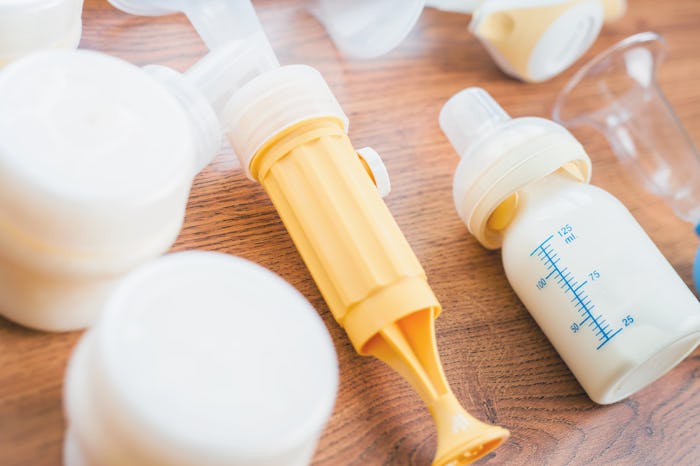Life

How To Use A Breast Pump To Induce Labor, Because It's Totally Possible
We’ve all heard of tricks that women may use to help induce labor more quickly, such as taking long walks, eating spicy foods, or using a breast pump. Wait, what? Yes, using a breast pump to induce labor is one of those ideas that sounds insane the first time you hear it, but there’s actually a precedent of using breast stimulation to induce labor. For instance, years of research found that the women who received stimulation stimulation via electric breast pump went into labor more quickly than women who received oxytocin infusions for labor induction, although the duration of active labor was the same for both groups. And a 2005 study of 719 women found that breast stimulation appears to have some benefit to women trying to go into labor, because it causes the womb to contract, and may increase the hormone oxytocin, which helps stimulate contractions. There is even a patent for a specific breast-stimulating, labor-inducing device.
So it turns out this old wives’ tale may actually hold water, which is great news for pregnant ladies who are just want to have their baby as soon as possible. But does that mean it’s a smart idea? Here are some things to consider before busting out the breast pump in attempt to induce labor quicker.
Pros
Breast stimulation as a means of inducing labor has been used by midwives for centuries, and there is some current data that supports the use of breast stimulation for labor induction. It makes sense that modern women interested in this technique would make use of an electric breastfeeding pump to help speed things along, although to date there have been no large-scale studies of this technique that prove its effectiveness.
Cons
Although such nipple stimulation may indeed trigger oxytocin and thus contractions, Mayo Clinic notes that “further research is needed to evaluate these techniques' safety and effectiveness, particularly in women who have high-risk pregnancies.” A high-risk pregnancy could involve anything from a mother with diabetes to a mother expecting twins; in other words, a lot of moms might fall under this umbrella. So even if your pregnancy is progressing well, first have a chat with your healthcare provider if you plan to use the simulation route to induce labor.
How To Do It
If your doctor does give you the go-ahead to pump, it’s important that you proceed with caution. Although no official guide is available, most sites recommend you pump each breast in 15-minute intervals, rest for a few minutes, and repeat. The goal here is not milk production, just stimulation until your contractions begin. And once those start, your baby will soon be out in no time.